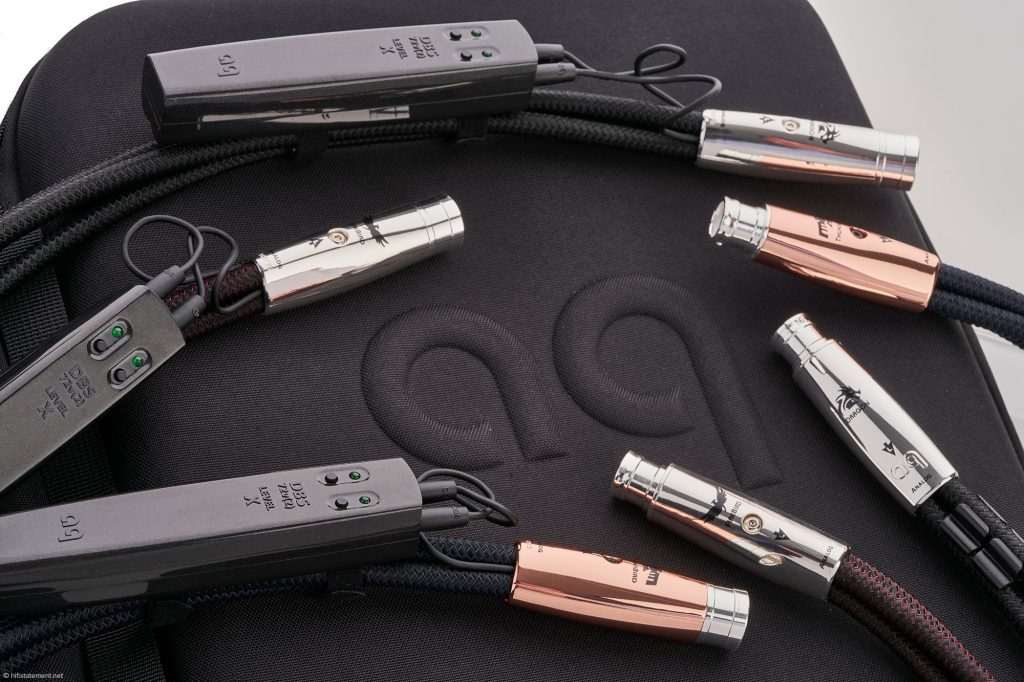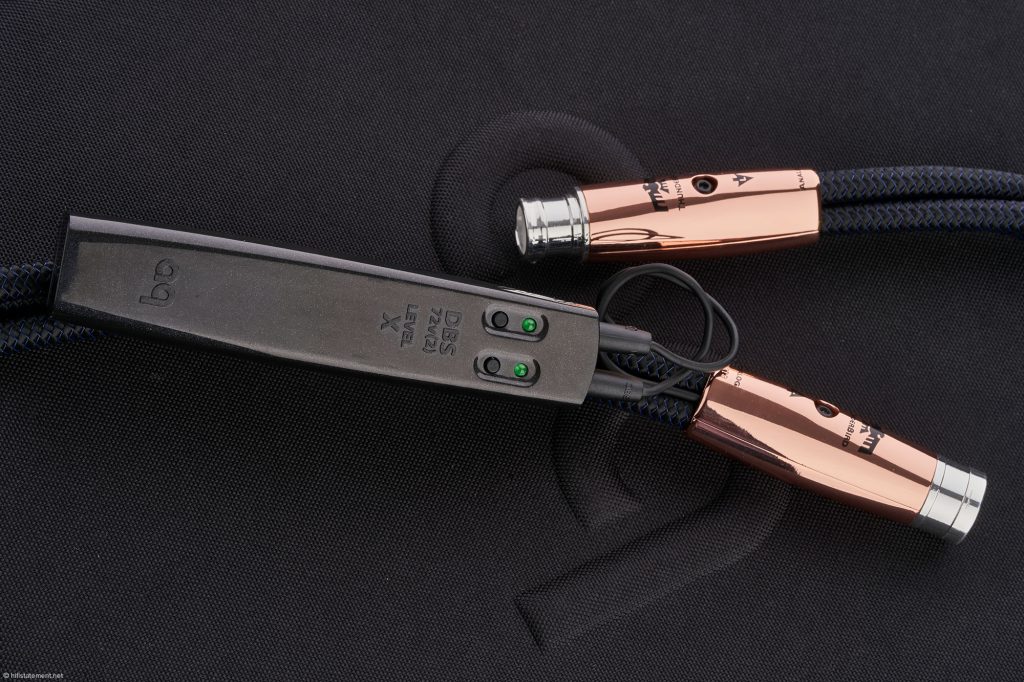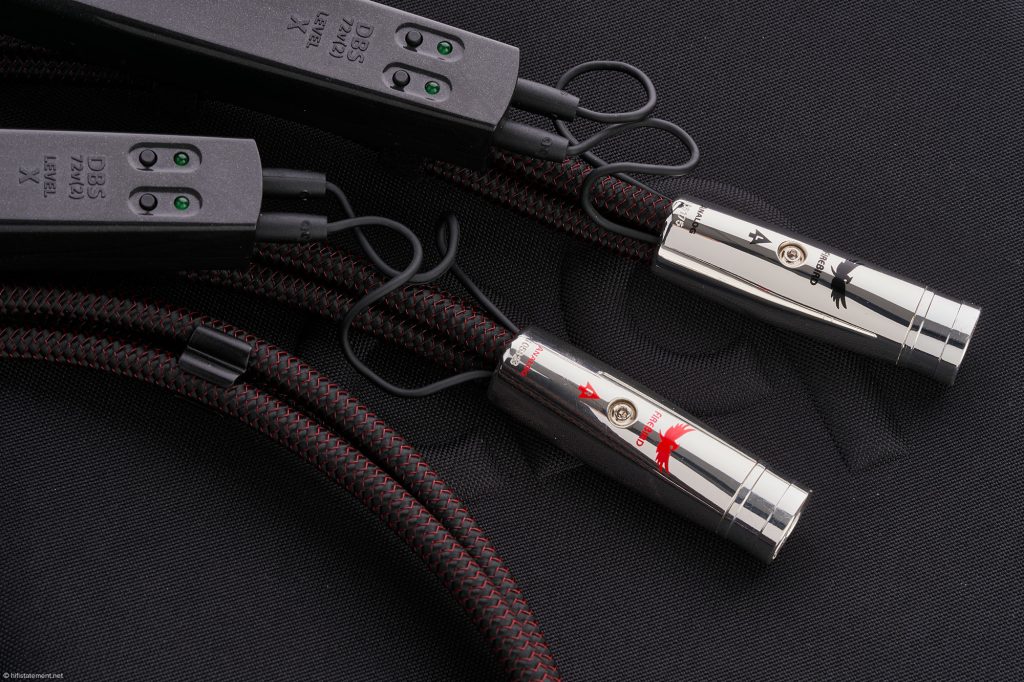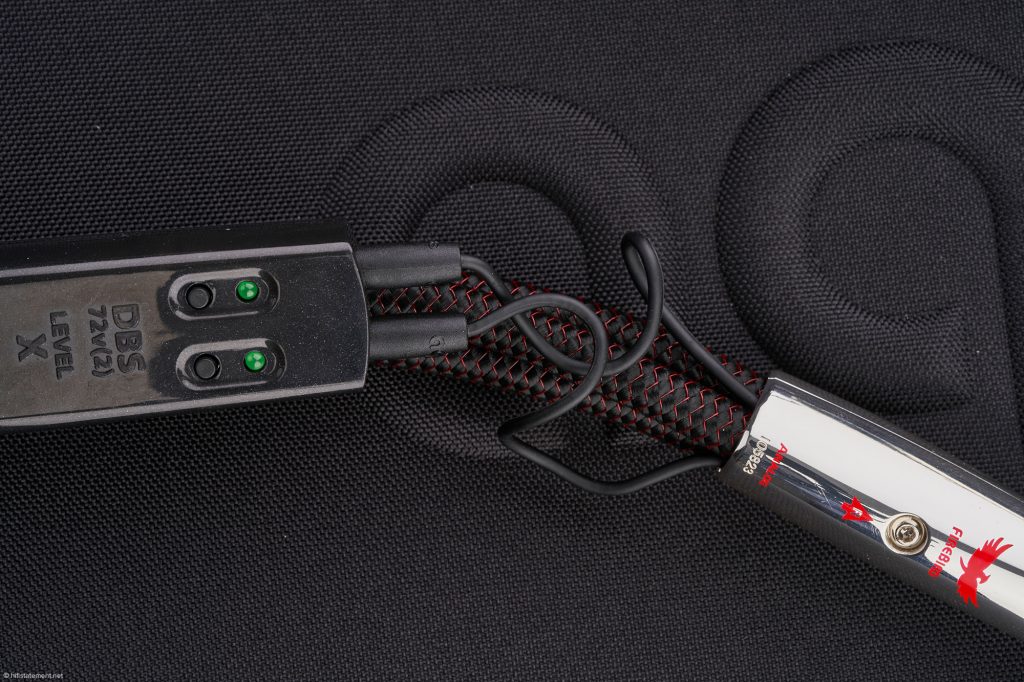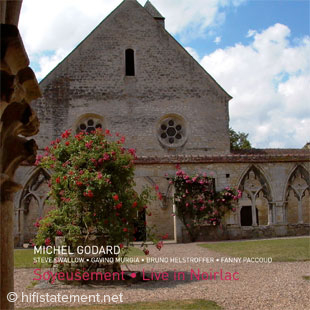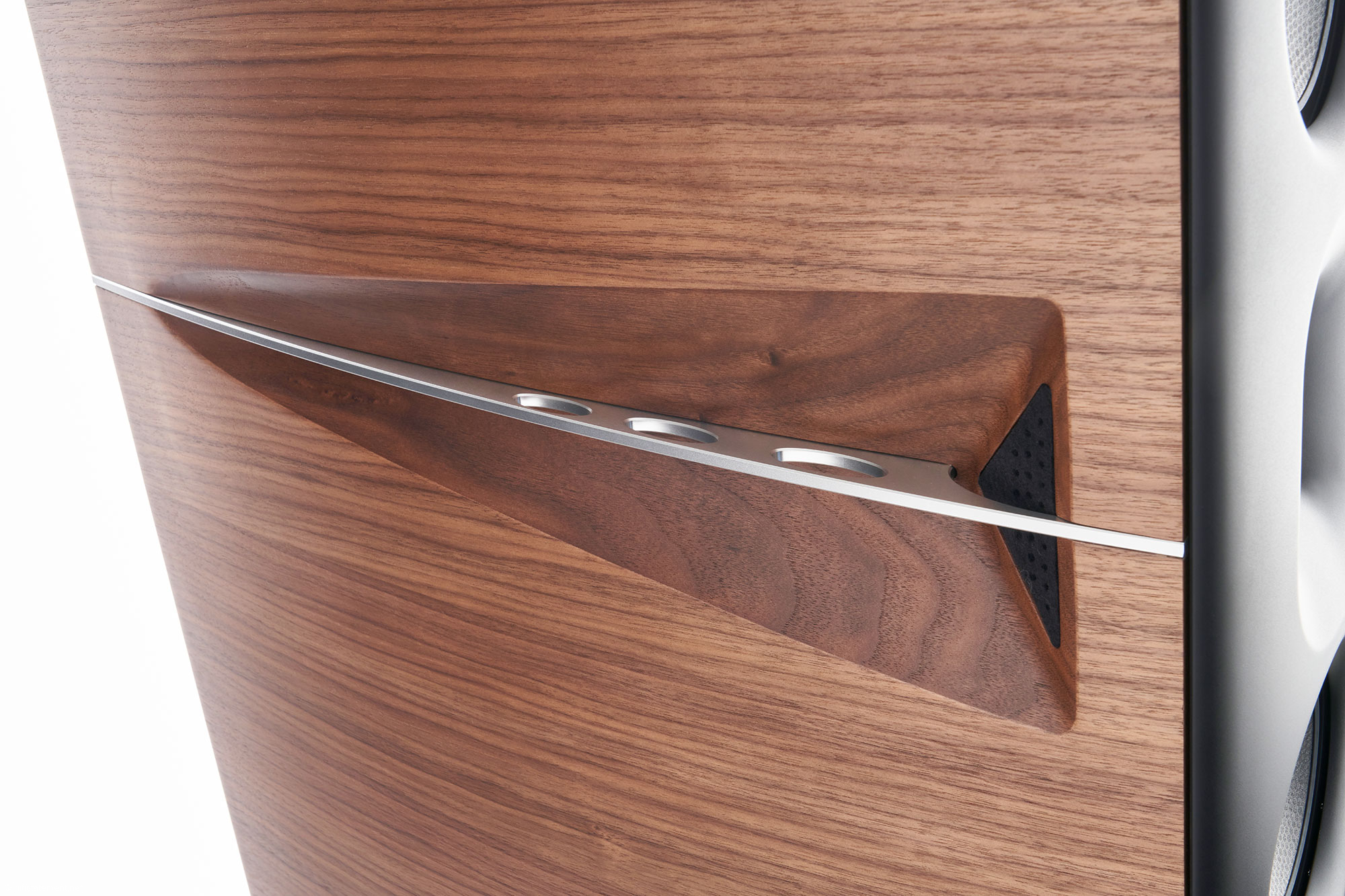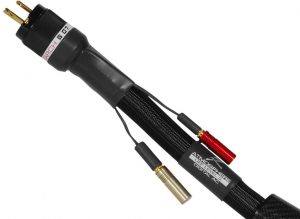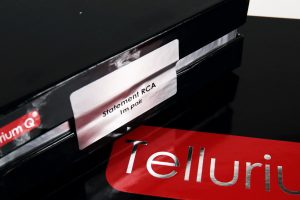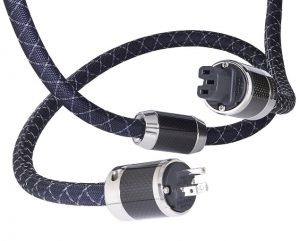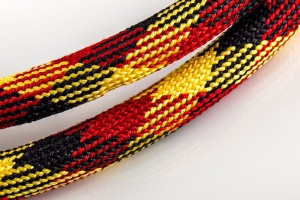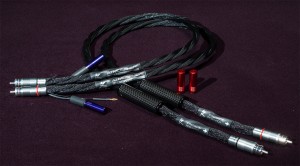The Mythical Creatures first appeared among the power cords. Then we spotted them among the speaker cables, and more recently, my colleague Wolfgang Kemper tracked down a few HDMI cable specimens. Now, Richard Drees, Sales Director for Germany, and Rob Hay, Marketing Director for Europe, released the NF cable variants directly into my listening room.
Probably the Mythical Creatures' first sighting can be dated even more precisely. But it's enough for me to know that Garth Powell, who previously developed power supply technology for Furman, a company with a good reputation in the pro audio field, had moved to AudioQuest before the first Mythical Creatures appeared. The Niagara Power Conditioners were his first creations there, followed soon after by the Low-Z power cables, which have no characteristic impedance. These innovations' immensely positive sonic impact led my colleagues and me to award AudioQuest's Low-Z Power Noise-Dissipation power supply technology with one of the first two Statement-in-High-Fidelity awards in November 2019. But the power cords were just the beginning of AudioQuest owner Bill Low and Garth Powell's immensely productive collaboration. How the differing views of the pragmatist and the strictly scientifically oriented engineer conflicted at first, for example, on the subject of "directionality of cables," but then a creative solution in the matter of noise dissipation emerged from it, is described by Garth Powell in one part of the interview he gave to Hifistatement related to the review of his power supply technology.
ThunderBird, FireBird, and Dragon can be recognized by the combination of the braid color and the connector plating.
In particular, the Low-Z technology led to new approaches in designing the speaker cables ThunderBird, FireBird, and Dragon. The latter, by the way, harmonizes in the bi-wiring variant excellently with my Göbel Epoque Aeon Fine—no wonder that I was very excited about AudioQuest's new NF cables and approached them with high expectations. But since Richard Drees and Robert Hay first wanted to hear how the new cables performed in my set up, I had to wait until after their visit to get my impression of the fabulous creatures' performance. And you, too, will have to be patient before you hear anything about the sonic influence of ThunderBird and Co. For now, Garth Powell's white paper on LF cables is on the agenda.
The developer begins by emphasizing how far AudioQuest has already come by using Perfect-Surface conductor metals, a balanced triaxial topology, and directionally oriented conductors, as well as the FEP Air-Tube dielectric, and the patented Dielectric-Bias System. A large part of the performance of the cables available to date would also be due to the noise attenuation or shielding provided by multiple layers of conductive carbon and aluminum foils. However, optimizing these different technologies would no longer promise any far-reaching sonic improvements—at least if one tried to verify them with the standard laboratory measurements. Even serious laboratories concentrate on so-called "audio frequencies." One would measure with a frequency sweep with a relatively high signal level at the matched impedance of a test bench (source and load)—without complex, dynamic music signals. In such an environment, almost all cables should behave acceptably.
Garth Powell states: "Real-world analog audio circuits virtually never have matched impedance at the source and load, and none of them behave that way at radio frequencies. This is key: In today's environment, we are besieged with radio-frequency (RF) induced noise. This has always been true, but not to the extent presently experienced, and not to the extent where noise signals can be so very small that capacitive coupling renders basic filter circuits, chips, and components to be increasingly limited in their ability to dissipate enough of this induced noise."
Copper conductors are used in the ThunderBird, indicated by the copper plating of the connectors
"Further, in some applications, these laboratory instruments have become worse at their intended jobs. The Audio Precision, for example, is a fabulous digital test instrument, respected industry-wide for its ability to provide insight into the performance capabilities of many audio circuits and components. However, its design inherently limits its high-frequency sensitivity to well below 500kHz. This is just below the AM radio band! Analog test benches could have been much better in this regard, but most tests were done with both high- and low-frequency filters in place. Why? To get consistent readings, and because almost nothing does well when all the induced noise is shown. However, if we wish to make technological strides forwards, we must see, acknowledge, and consider the full extent of the problems in play (warts and all). We must accept that there is simply too much induced noise to fully dissipate. Rather, we will need to both dissipate and drain the noise in the most efficacious way possible—and in the most even, consistent, or linear means possible.The characteristic impedance (ie, 50, 75, or 110 ohm) of an interconnect cable has to do with the geometric spacing of the topology's high- to low-signal conductors and their dielectric constant. (It has nothing to do with series resistance, by the way.) These designs go back to broadcast radio and video—specifically, transmission lines. When matched with source and load electrical circuits of the exact same impedance, many inherent losses and distortions are either eliminated or greatly reduced. However, for many reasons that are both practical and directly related to circuit performance, that idea was abandoned by most of the audiophile industry almost from the beginning.
So, would there be any benefit in eliminating (as best we could), the cable's characteristic impedance? Absolutely! Could it be done? Yes, the issue is markedly reduced by eliminating the cable's dielectric constant via 100% electrostatic screening. This is a technology that I developed for AudioQuest's Storm Series of AC power cables as an offshoot of technologies developed for our Niagara Series power products. In those applications, the fundamental issue was minimizing any distortion or compression of transient current. For an analog interconnect, no such issue exists. However, the need for predictable linear behavior is still paramount. In fact, it's even more vital as the primary audio signal reaches far lower into the noise-floor. Through considerable testing and work, we have created a repeatable method for establishing a level of Permanent Molecular Optimization of both the cable contacts and the dielectric, the effects of which no existing system or method could possibly achieve after any length of time. The process optimally stresses the associated materials in a fashion similar to the purposeful run-in of a fine race engine …."
The FireBird has a black/red braid
Richard Drees and Rob Hay brought also two RCA cables, one of which had been treated according to Garth Powell's process. However, we could not hear the differences since my chain is wired symmetrically. However, in the not too distant future, a treated and an untreated XLR connection should arrive at my house. I will tell you about my experiences with them in a supplement to this article. But let's finally get to the first Mythical Creature, the ThunderBird. Its conductors are "Perfect-Surface Copper+," i.e., high-purity copper with a special surface treatment. As a reference to this material, the surfaces of the special XLR connectors—the three individual signal conductors have to be accommodated in them, after all—are copper-plated, which is also supposed to benefit RF conduction. The two 1.5-meter cables replace the Goebel High End Lacorde Statement between my D/A converter, Chord Electronics' DAVE, and the Audio Exklusiv's Reference line-preamp.
I started with a familiar studio recording—and I was stunned by the virtual stage's ambiance: The tablas seemed to resound in a larger, brighter space, and the timpani comes from great depth, and yet powerfully. The reproduction seemed fresher and more upbeat than usual. I had expected more minor differences between the two high-end cables, and was surprised how much more listening pleasure the ThunderBird allowed. To rule out the possibility that my test piece happened to be a perfect match for the ThunderBird's sound characteristics, I briefly listened to two excerpts from orchestras recorded in natural acoustics with a few microphones. I found that I do not need to revise my spontaneous enthusiasm in the least. On the contrary, the orchestral recordings, in particular, benefited from the ThunderBird's capabilities. It's incredible how much more minute information the Mythical Creature elicited from my chain. The best thing is that these do not contribute to an exhausting, analytical playback, but more music enjoyment.
Instead of enjoying this excellent cable for a longer time, I just use it to listen to one of the most beautiful current releases: Avishai Cohen's album Naked Truth. The Qobuz stream spoils me with lyrical melodies and the very finest ECM sound: a delight—not least because of the immensely open and transparent ThunderBird. But since I'm in the cable land of milk and honey right now, I concentrated on another well-known test piece, and then swapped the ThunderBird for the FireBird. Yes, there it was again, this fascinating illusion of space. Now the placement of the instruments on stage was even slightly more precise, and the sound sources were now even more sharply focused. The bass range sounded with a touch more pressure, but these are relatively marginal. What made the switch from the Firebird back to the Thunderbird difficult or even impossible—once you've had the direct comparison—is the greater rhythmic intensity of the reproduction with the Firebird. You really can't keep your feet still with the appropriate music. Speaking of Firebird, after discovering Mahler's Symphony No. 3 with the Bavarian Radio Symphony Orchestra under Mariss Jansons, I found and downloaded Stravinsky's Le Sacre Du Printemps and the Firebird Suite from Qobuz in search of similarly good-sounding recordings. This recording also benefits from Christoph Stickel's mastering, who was also involved in the Mahler CD. The ballet captures you with its rhythmic suspense. The orchestra seemed to perform on an extensive and deep stage. Even if not always entirely catchy, one could completely lose oneself in the euphony—if one would not be suddenly startled by the timpani in the "Infernal Dance": The dynamics of the recording can impress me all around, too, via an adequate system and with the appropriate interconnect cables!
Black braiding and silver-plated connector housings characterize the Dragon
By the way, the signal conductors of the FireBird are made of AudioQuest’s Solid Perfect-Surface Silver. The connector housings are silver-plated to dissipate RF interference. The Dragon is assembled with the same connectors and differs from the FireBird in the noise dissipation: Its highest quality level, reserved for the Dragon, is called "Level 7" by AudioQuest. It differs from Level 6 in the metal used for the RF-Drain wire, which is also Perfect-Surface Silver in this case. And that makes a difference in terms of sound. With the Dragon, you get a bit more of everything: a slightly more extended stage, even somewhat better imaging, a tad more punch in the low end, and even minimally more powerful timbres. The best part is that these impressive partial aspects create an utterly harmonious whole. Even the spatial presentation, which has never been heard like this before, does not seem gimmicky or overly spectacular. Instead, the Dragon intensifies the perception of musical flow and thus the listener's enjoyment.
Of course, I heard the usual songs like Shostakovich's "Polka" or Keith Jarrett's "God Bless The Child" when switching between FireBird and Dragon. But much more interesting is how the cables behave with quite "normal" music, i.e., music not selected according to audiophile criteria. One of the most exciting discoveries for me—first in the Jazz Podium magazine, then on Qobuz—was the Paris Zyklus of the Rebecca Treschner Tentet. In terms of spatial illusion, the studio production is nothing special—even though the sound is completely detached from the speakers—but musically it is: exciting, melodic compositions and, due to the instrumentation, rich timbres. The skin of the fat bass drum, the wood of the clarinet, the vibraphone metal, and sometimes the strings of a harp sound incredibly realistic.
But as tempting as that would be, I can't indulge in the musical enjoyment just yet. It is possible that the best is yet to come. Richard Drees and Rob Hay now know my set up and the cables used in it quite well, and had therefore also brought a six-meter Dragon for the connection between preamp and power amp. Already in the first seconds after I exchanged the Goebel for the Dragon interconnect, the latter makes clear that it can offer a little more: CODONA's "Malinye" is playing, and quite far to the left, Don Cherry plays the intro on the melodica, and that he does this in an ample studio space with some reverberation is probably familiar to me. With the Dragon in the chain, however, the reverb is traceable well past the center of the stereo base to almost all the way over to the right. These subtle signals might otherwise have been lost in the residual noise. Thanks to the Dragon, they are now audible. A similar effect appears in this piece when playing the cymbals: Their decay is noticeably longer than before. The Dragon reduces the SPL of the noise floor, making room for more detailed information.
Each of the positive signal paths of the XLR cable has its own dedicated 72V Dielectric-Bias System
You might object that such audiophile nitpicking has little to do with music, but I went along with it to avoid having to list again all the ways in which the Dragon brings even more – albeit small – improvements. You and I rightly presuppose those. And I don't want to make it as easy for myself as it was in the relevant publications 30, 40 years ago, when one simply spoke of a curtain being drawn away between musicians and listeners. I will now stop putting into words the great musical experience to which the Dragons contribute a good part. I'd rather revel in Ferenc Snétberger's mellifluous "Empathy" from the album Nomad, which can be a lot of fun even through delicately tuned small systems. With the Dragons in a high-end chain, it becomes an experience not soon to be forgotten: an expedition into wide spaces!
STATEMENT
I would never have imagined that there is still so much room for improvement in interconnects. But Bill Low and Garth Powell surprised me with their Mythical Creatures once again. As usual with AudioQuest, higher investment leads to more significant sonic improvements. ThunderBird, FireBird, and Dragon are no exception. You should only try these cables if you are willing to make a substantial investment: State-of-the-Art cables simply come at a price. I don't doubt that you will want to own one of these Mythical Creatures when you hear it.
EQUIPMENT
- Turntable: Brinkmann LaGrange with tube power supply
- Tonearm: Einstein The Tonearm 12", Thiele TA01
- Cartridge: Transrotor Tamino, Lyra Etna
- Phono Preamp: Einstein The Turntable's Choice (symmetrical)
- Tape machine: Studer A80
- NAS: Melco N1Z/2EX-H60 with external Audiaz linear power supply, WDMyCloud
- Streamer: AURALiC G2.1 with 2TB SSD
- Up-Sampler: Chord Electronics Hugo M-Scaler with Ferrum Hypsos PSU
- D/A converter: Chord Electronics DAVE with linear power supply
- LAN-Switch: Ansuz PowerSwitch D-TC Supreme
- Preamplifier: Audio Exklusiv P7
- Power amplifier: Einstein The Poweramp
- Loudspeakers: Børresen 05 SSE
- Cables: Goebel High End Lacorde Statement, AudioQuest Dragon HC und Tornado (HC), Swiss Cables, Forcelines, Ansuz Speakz D-TC Supreme, Digitalz D-TC Supreme, and Mainz D2 (2x)
- Accessories: AHP Klangmodul IV G, AudioQuest Niagara 5000 and 1200, Synergistic Research Active Ground Block SE, HMS wall sockets, Blockaudio C-Lock Lite, Acapella bases, Acoustic System feet and resonators, Artesania Audio Exoteryc, SSC Big Magic Base, Finite Elemente Carbofibre°-HD, Harmonix Room Tuning Disks, Audio Exklusiv Silentplugs, Arya Audio Revopods, Waversa Isolator-EXT-1 (2x), ADOT Medienkonverter (2x) with Keces P3 and SBooster BOTW P&P Eco MKII, Singlemode-Duplex Fiber optic cable, Ansuz Sparks, Darkz Z2S, PowerBox D-TC SUPREME
Specifications
ThunderBird XLR
- Metal: Solid PSC+
- Geometry: ZERO-Tech (no characteristic impedance)
- Dielectric: FEP Air-Tubes
- Noise dissipation: Level 6: ZERO-Tech + 72-V-DBS + Graphen/Carbon mesh net
- Jacket Braid: blue-black
- Plug Barrel: HF drain copper plated
- Plug Contact: Hanging silver on red copper
- Price: (1m) 3,900 Euro
FireBird XLR
- Metal: Solid PSS
- Geometry: ZERO-Tech (no characteristic impedance)
- Dielectric: FEP Air-Tubes
- Level 6: ZERO-Tech + 72v DBS + Graphene/Carbon Mesh-Network
- Jacket Braid: red-black
- Plug Barrel: RF-Draining Copper-Plated
- Plug Contact: Hanging-Silver over Red Copper
- Price: (1m) 6,900 Euro
Dragon XLR
- Metal: Solid PSS
- Geometry: ZERO-Tech (no characteristic impedance)
- Dielectric: FEP Air-Tubes
- Noise dissipation: Level 7: PSS-Drains + ZERO-Tech + 72v DBS + Graphene/Carbon Mesh-Network
- Jacket Braid: black-silver
- Plug Barrel: RF-Draining Silver-Plated
- Plug Contact: Hanging-Silver over Red Copper
- Price: (1m) 11,900 Euro
Distributor (Europe)
AudioQuest BV
Hoge Bergen 10
4704RH Roosendaal, The Netherlands
+31.165.54.1404





